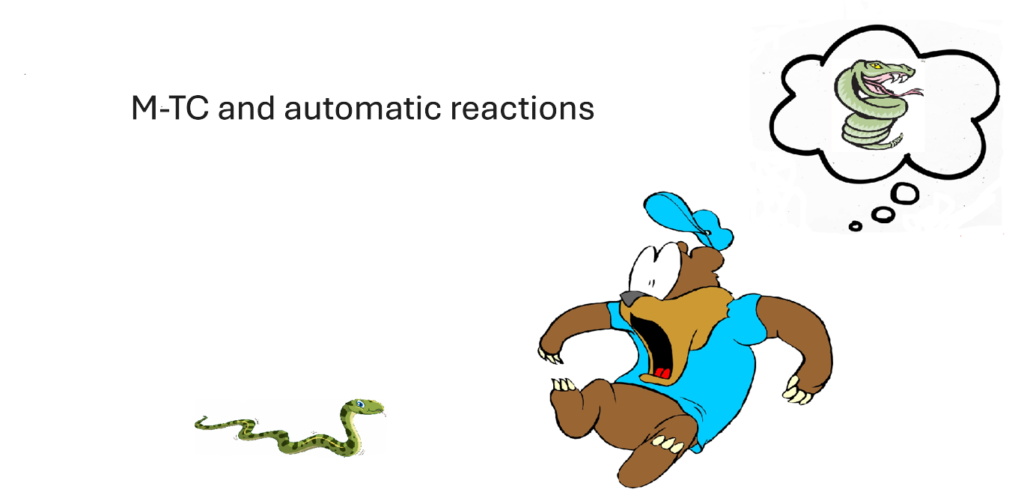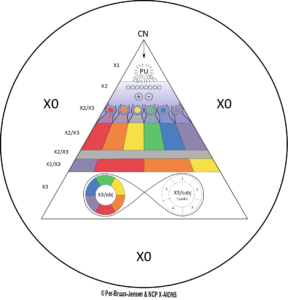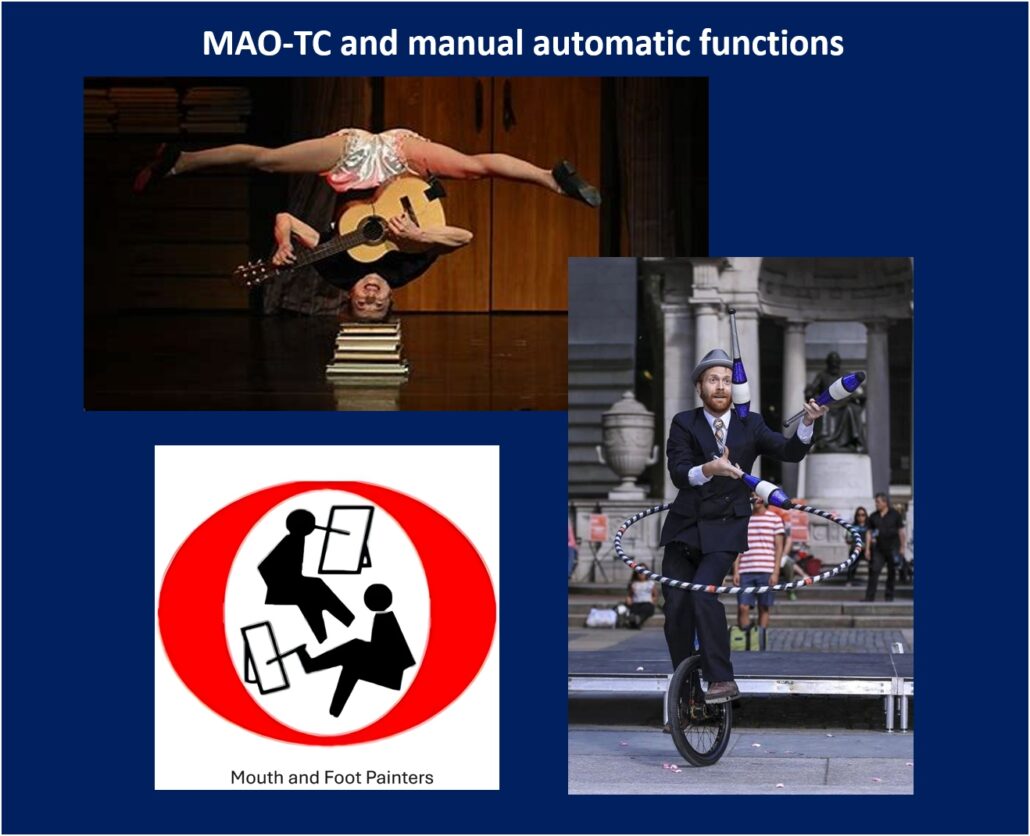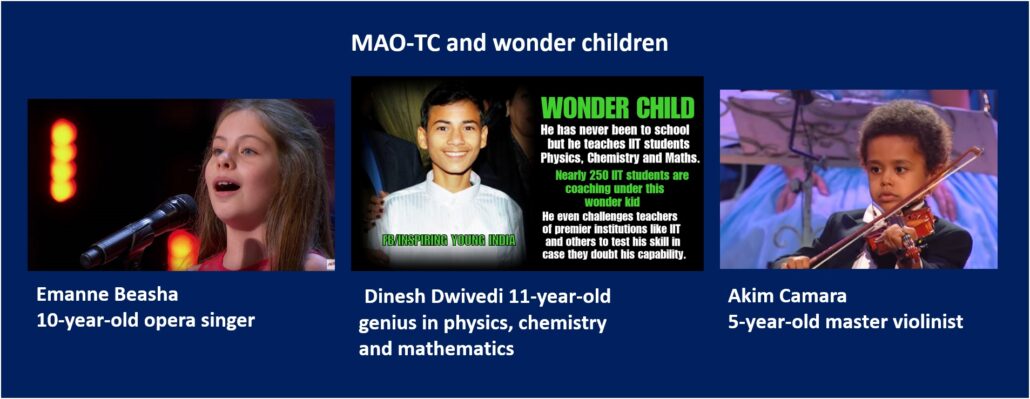– THE ONTOLOGY OF THE COSMIC WORLDVIEW –
– PART III –
The X-Structure
Reincarnation and Sexual Evolution
———
Brief Introduction – Therner & Loeth
including special texts by Per Bruus-Jensen
– Ontology of Life, Consciousness and Reality –
INTRODUCTION
This page is under development and will be expanded successively.
The content and layout of text sections may change during the ongoing development of the page.
We recommend reading The ONTOLOGY of The Cosmic Worldview PART I and PART II before continuing with PART III.
We also recommend this video: Consciousness Independent of The Physical Body, Reincarnation and Evolution: The X-Structure – The Nature of Life and Reality.
Some sections of PART III are available in Swedish and Danish (by links).
Några avsnitt i DEL III finns på Svenska (markerade med länkar).
Nogle afsnit i DEL III er tilgængelige på Dansk (markeret med links).
Brief Overview of Content
The Ontology of The Cosmic Worldview Part III
- The Talent Core Principle and the Talent Cores
- Reincarnation, the Reincarnation Principle, the Cycle Principle, Life After Physical Death, Existence Between Two Incarnations
- The Six Cosmic Evolutionary Factors – the Cosmic Teleostates
- The Pole Principle, Sexual Evolution
The X-Structure
Reincarnation and Sexual Evolution
Talent Core (or Talent-kernel) principle/ Ability-Nuc principle (the principle for the formation of ”talent cores”/ “ability-nucs”, in some English translations “talent-kernels”)* effects all forms of accumulation and storage of experiences, abilities, skills, qualities, characteristics, etc. and programs for the automatic development of organisms into stable storage units termed talent cores/ ability-nucs.
* In the text below we use the term “talent core”.
Talent Cores are unique, organic accumulation and storage units with specific processing and management functions. The talent cores accumulate and store all our individual experiences, knowledge, abilities, skills, qualities, etc. in order to make it possible for us to reuse and develop them and to take them with us from life to life. The talent cores form and continuously develop a unique individual paragenetic force field, which is of great importance for each reincarnation process the individual undergoes. A special type of talent core stores programs for the automatic development of organisms. The talent cores and their functions are prerequisites for the development of all forms of life and evolutionary processes.
Very briefly and generally speaking, talent cores are paraphysical, organic centers of power containing experiences, abilities, qualities, skills, etc. that the individual has developed and acquired in certain areas during its eternal life. These experiences, abilities, and qualities, etc., are transformed into codified patterns of vibrations containing the “data and program”, which the current talent cores operate and administer.
There are three main groups of talent cores: 1. memory-talent cores, 2. manual activity organ-talent cores, 3. autonomous organ-talent cores, (briefly described below), all of which are found in the so-called fate element in the eternal body (area d (Xom3)). The fate element with its associated talent cores can be likened to an organic hard drive with a holographic structure and infinite capacity where processing, accumulation and storage take place in these three main groups of talent cores.
– Memory-talent cores (M-TC) store experiences – memories from the individual’s ongoing life experience. The M-TC are of great importance to the perception process and the creation of qualia and life experience. Together, the memory-talent cores constitute a unique individual archive that could be described as an immense information bank, termed the perception archive, where our previous experiences are stored. Consequently, the perception archive contains an enormous amount of reference material. Briefly, the information stored in these M-TC gives “resonance” to new incoming objective impulses, via our physical senses; sight, hearing, etc., and influences how we transform, interpret and act on stimuli; namely the transformation of objective reality into subjective reality, which is a central part of the so-called Reality-Consciousness Transformation Process – the X-RCT Process.
The memory talent cores are constantly being processed under the influence of the mother energy and, over time, they undergo a cosmic chemical process that results in special “refined” M-TC termed gold-copies. Gold-copies give rise to a state of bliss and intense pleasure, which dominates in the Memory plane (bliss and mineral realm).
– Manual activity organ-talent cores (MAO-TC) store learned and practiced activity programs: abilities that the individual has built up and developed through application and training (cycling, reading, playing instruments, certain body functions, etc.) The construction and development of manual activity organ-talent cores includes three main stages, very briefly described here:
A-stage, interest stage; the individual has an interest, desire – day-conscious will, desire or need to attain a specific function or skill.
B-stage, training/ exercise stage; the individual engages, trains – day-conscious active training, striving and practice, which stimulate the talent core building.
C-stage, automatic function stage; the individual has acquired a skill – the function or skill has become automatic, and does not require day-conscious concentration for its implementation, for instance, walking, cycling, reading, etc., and has thus become an automatic function. The optimal level at this third stage can be described as the genius stage.
– Autonomous organ-talent cores (AO-TC) store information for the creation and development of paraphysical and physical organisms and are crucial to how things take their form, grow and evolve in a particular way, (thereby dismissing the traditional theory that all this complex form-shaping and development is merely genetically programmed). The primary form-shaping and evolving processes with all their underlying information are accumulated in the autonomous talent cores and activated at the paraphysical level when the reincarnation process begins.
The autonomous organ-talent cores are created at paraphysical planes of existence (Intelligence plane and Intuition plane) before the coming transition into a new organism principle. These new AO-TC are developed and specialized for the new organism structure and its basic and essential functions, features and future development. The new AO-TC contain entire programs that are later activated and function completely automatically in the realization of the new organismic principle in physical matter, which happen totally without the individual’s day-conscious volition and participation.
• The Talent Core Principle and The Talent Cores – Section II
– Continuation –
This section is a continuation of the text above (and includes a short summary) with references to evolutionary perspectives and more.
- The Talent Cores function as storage units and are unique to each individual (each living being, regardless of life form).
- The Talent Cores constitute a fundamental prerequisite for all life, all development and all evolutionary processes.
- The Talent Cores constitute an individual information bank, the so-called perception archive.
- The Talent Cores build up and develop an individual paragenetic force field.
In order to understand the concept of talent cores, it is fundamental to be cognizant of the entire organism complex with its three different body structures or organism structures, and the concept of day-consciousness and night-consciousness – Appendix link 6: The Organism Complex and the terms Day-consciousness and Night-consciousness, (Supplementary text to the presentation of the Talent core principle and the Talent cores).
Before we continue:
Short Comments on the terms Autonomous organ-talent cores (AO-TC)
and Manual activity organ-talent cores (MAO-TC)
Regarding the terms autonomous organ-talent cores (AO-TC) and manual activity organ-talent cores (MAO-TC), Per Bruus-Jensen explains that he added the word “organ” (“organ”-talent cores) to these two terms in order to facilitate the understanding of these groups of talent cores. The starting point for this was our human perspective, according to which our physical bodies are made up of organs. Therefore, it is important to emphasize that these designations (“organ”-talent cores) apply regardless of which of the seven main organism principles is current and referred to (i.e. not only for organs). To clarify: the autonomous organ-talent cores build up all types of organisms in the micro-, meso-, and macrocosms (organisms known to us as elementary particles, cells, organs, organisms, planets, solar systems, and galaxies). From this perspective, we (Therner & Loeth), together with Per Bruus-Jensen, have considered changing the name to autonomous “organism”-talent cores, but decided to keep the original name “autonomous organ-talent cores” since Per Bruus-Jensen has used this term in his earlier texts.
Regarding the term ”manual activity organ-talent cores”, the word “organ” could be excluded, but for the same and above-mentioned reason, we have also, in this case, decided to retain the original name “manual activity organ-talent cores”.
Memory-talent cores (M-TC) store experiences as memories and constitute a unique individual information bank, the so-called perception archive, which contains an enormous amount of reference material. This perception archive constitutes a fundamental prerequisite for perception and life experience, all forms of recognition and automatic reactions. The memory-talent cores are also the “key” to phenomena such as memories from past lives, xenoglossia, deja-vu experiences, “inexplicable” behaviors and reactions.
The information stored in the M-TC in the perception archive gives “resonance” to new incoming objective impulses, via our physical senses; sight, hearing, etc. and influences how we transform, interpret and act on stimuli; namely the transformation of objective reality into subjective reality, which is a central part of the so-called Reality-Consciousness Transformation Process – the X-RCT Process.
 Past experiences of, for example, dangerous snakes, which are stored in the M-TC in the perception archive, normally result in automatic reactions like the one we see in the picture here. As the experience material regarding a certain situation or event increases in our memory-talent cores, our reactions to the current situation become increasingly rapid and when the experience material becomes sufficiently extensive, we react directly and completely automatically without consciously first assessing the situation that has arisen – so-called automatic reactions.
Past experiences of, for example, dangerous snakes, which are stored in the M-TC in the perception archive, normally result in automatic reactions like the one we see in the picture here. As the experience material regarding a certain situation or event increases in our memory-talent cores, our reactions to the current situation become increasingly rapid and when the experience material becomes sufficiently extensive, we react directly and completely automatically without consciously first assessing the situation that has arisen – so-called automatic reactions.
 Below are some examples of the crucial importance of memory-talent cores to past-life memories, etc. In this context, we would also like to refer to Dr. Jim B. Tucker and his colleagues at the University of Virginia School of Medicine, Division of Perceptual Studies, and their research into children’s memories of past lives.
Below are some examples of the crucial importance of memory-talent cores to past-life memories, etc. In this context, we would also like to refer to Dr. Jim B. Tucker and his colleagues at the University of Virginia School of Medicine, Division of Perceptual Studies, and their research into children’s memories of past lives.
Children often begin to express their memories from previous lives when they are 2-3 years old, and these memories are usually interpreted by their parents as fantasies or dreams. The memories normally seem to fade and end at the age of 6 to 8, which is due to the fact that the brain’s communication via the switching body, with the memory-talent cores in the eternal body, decreases as the brain develops and becomes able to support and administrate more and more of the individual’s day-consciousness*. This can be likened to a more or less open door that slowly closes.
* Read more, Appendix link 5: States and Levels of Consciousness.
During the child’s development, day-consciousness gradually becomes more and more connected to the physical brain, and it appears to be a “closed door” between day-consciousness and night-consciousness.  This means that most adults cannot normally access the information from their previous lives that is stored in their memory-talent cores in the eternal body. However, some people can access memories and pictures from past lives during meditation, regression or hypnosis – and others can get it spontaneously, often triggered by a particular situation or occasion.
This means that most adults cannot normally access the information from their previous lives that is stored in their memory-talent cores in the eternal body. However, some people can access memories and pictures from past lives during meditation, regression or hypnosis – and others can get it spontaneously, often triggered by a particular situation or occasion.
In summary, regarding children’s memories of past lives: Many studies demonstrate that children usually begin to express their past life memories between the ages of 2 and 4, and this typically fades by the age of 6 to 8. According to the Cosmic Worldview, this fading is due to the child’s brain gradually developing the ability to carry more and more of the child’s day-consciousness, which causes a steadily diminishing day-conscious access to the extremely extensive memory and information material stored in the memory-talent cores in the eternal body.
Below are some common characteristics regarding children and past life memories. The children often:
– claim that their new body feels strange and that their name is incorrect,
– talk about the parents and family they had in a past life,
– show fear of objects and situations connected with dramatic events in a past life,
– remember their death, and events and circumstances surrounding the death,
– remember special events vividly,
– behave like an adult in several situations,
– have skills and knowledge not taught or learned in their current life.
In cases where children visit their previous home or a place they had connections to in a previous life, they can point out changes.
Many psychiatrists, therapists, and psychologists study adults’ memories and experiences of previous lives, using various methods of hypnosis, meditation and regression therapies through which people try to go back to previous lives to understand their current-day phobias, inexplicable behaviors and reactions for which there are no explanations based on their current life.
Research demonstrates that inexplicable behaviors, phobias, overreactions, fear, etc., often turn out to have causes in experiences that the individual has had in previous lives. This applies not least to difficult, dramatic and traumatic events and situations.
A related phenomenon is xenoglossia, the ability to more or less understand a language not encountered during your current life. Or familiarity with a place not visited or even heard of, and different forms of déjà-vu.
Very briefly speaking, the overall explanation for these and similar phenomena is that some individuals can access certain information stored in their memory-talent cores, that they do not normally have access to during their day-conscious state in physical life.
Manual activity organ-talent cores (MAO-TC) are fundamental to learned skills; learning through training and practice, which leads to the development of automatic functions, so-called manual automatic functions. See text above (link) describing the three main developmental stages of manual activity organ-talent cores: A-stage; interest stage, B-stage; training/ exercise stage and C-stage; automatic function stage.
Manual activity organ-talent cores also provide an explanation for so-called wonder children with their amazing abilities and skills. Wonder children are children who, at an early age, are masters of, for instance, an instrument or have other remarkable, well-developed abilities within a specific area. This is explained by the fact that, via their manual activity organ-talent cores, they have exceptional access to learnt abilities from past lives, during which they attained extraordinarily high levels of skill. The wonder child and composer, Wolfgang Amadeus Mozart, is a brilliant example of this. The three children in the image below are also exceptionally gifted.
Regarding manual activity organ-talent cores, it should be added that these talent cores also undergo a degeneration phase when the individual loses interest in a skill or ability and no longer uses or practices it. What was once a manual automatic function, thus becomes more and more debilitated until it disappears. The waning and disappearing of interests over time is a completely natural development that is driven by the I (X1) and its primordial urge in interaction with the hunger and satiation principle (changing and renewal principle) (X2), see also diagram changing and renewal.
 Autonomous organ-talent cores (AO-TC) store information for the creation of organisms and initiate, govern, and regulate all forms of organism development. These talent cores are pre-programmed and lead to the development of automatic functions, so-called autonomous automatic functions*, which are crucial to how all life takes form, evolves and functions in a particular way.
Autonomous organ-talent cores (AO-TC) store information for the creation of organisms and initiate, govern, and regulate all forms of organism development. These talent cores are pre-programmed and lead to the development of automatic functions, so-called autonomous automatic functions*, which are crucial to how all life takes form, evolves and functions in a particular way.
* Not to be confused with manual atuomatic functions (see MAO-TC above).
The understanding of autonomous organ-talent cores overturns the traditional theory that all this incredibly complex form-shaping and multifaceted development is merely genetically programmed.
The tal ent core principle is highly relevant in the field of epigenetics as it exerts influence on the genes of the DNA spiral via the generated talent cores. Namely, in the “top-down” way in which the talent cores define and enforce the appearance of new genes in the DNA spiral, which in this context can be seen as a neutral “keyboard” that talent cores can “play”, and thereby contribute to determining the “music”; i.e. the actual evolutionary process.
ent core principle is highly relevant in the field of epigenetics as it exerts influence on the genes of the DNA spiral via the generated talent cores. Namely, in the “top-down” way in which the talent cores define and enforce the appearance of new genes in the DNA spiral, which in this context can be seen as a neutral “keyboard” that talent cores can “play”, and thereby contribute to determining the “music”; i.e. the actual evolutionary process.
The talent cores also helps to explain the so-called evolutionary leaps, represented by the quite sudden appearance of new species, as well as the regeneration of extinct species given the ability to evolve into new species through the use of the great and abundant accumulation of talent cores brought from their previous existence (this subject area is described by Per Bruus-Jensen in Project LIFE – The Cosmic Evolutionary Spiral).
 Briefly about the autonomous organ-talent cores from a human perspective.
Briefly about the autonomous organ-talent cores from a human perspective.
The primary form-shaping and evolving processes, with all the underlying information accumulated and stored in the autonomous organ-talent cores, are activated at the paraphysical level when the reincarnation process begins. Furthermore, all our automatic functions and automatic behaviors are governed by the information stored in our talent cores. For instance, only a small proportion; 2-4 percent of our bodily functions are volitional – almost all of them are automatic functions.
As earlier mentioned, talent cores form and continuously develop a unique individual force field, the so-called paragenetic force field. This is of great importance for each reincarnation process that each individual undergoes. This force field determines which DNA complex on the physical plane the disincarnated individual can connect their paraphysical eternal body, via their new semiphysical switching body. This means that the paragenetic force field, in principle, decides which physical individuals are possible for the disincarnated individual to incarnate through. In other words, the paragenetic force field controls and limits the selection of which physical individuals can become the disincarnated individual’s parents.
The paragenetic force field is one of the six primary and governing evolutionary factors, the so-called Cosmic Teleostats (which we will return to in another section).
 The beginning of a new incarnation entails activation of the disincarnated individual’s autonomous organ-talent cores at the paraphysical level. These talent cores initiate and govern complex processes at the physical level via the transforming semiphysical switching body. We can follow these intensive activities and developments at the physical level from conception, zygote stage and onward.
The beginning of a new incarnation entails activation of the disincarnated individual’s autonomous organ-talent cores at the paraphysical level. These talent cores initiate and govern complex processes at the physical level via the transforming semiphysical switching body. We can follow these intensive activities and developments at the physical level from conception, zygote stage and onward.
These autonomous processes and developments comprise what Martinus terms the repetition, and this means that we repeat earlier stages of our development (within our current spiral cycle). The stages that are furthest from our current level are repeated first and fastest. The repetition processes can be observed during the embryonic and fetal periods throughout the different stages where the preprogrammed autonomous organ-talent cores automatically govern and control the creating and shaping of a new unique physical organism.
 The very early and fast development and repetition include, for instance, gill slits and tail, which are examples of organs and structures that are much less important or no longer needed in further incarnations, (but which have been necessary during earlier stages of development in the current spiral). The autonomous organ-talent cores that hold “older” programs and underlie these structures are in various stages of degeneration, but some of them still operate and result in vestigial or rudimentary organs, such as the outer ear muscles, appendix, wisdom teeth and coccyx.
The very early and fast development and repetition include, for instance, gill slits and tail, which are examples of organs and structures that are much less important or no longer needed in further incarnations, (but which have been necessary during earlier stages of development in the current spiral). The autonomous organ-talent cores that hold “older” programs and underlie these structures are in various stages of degeneration, but some of them still operate and result in vestigial or rudimentary organs, such as the outer ear muscles, appendix, wisdom teeth and coccyx.
After Birth, the repetition continues with various sequences repeated from previous lives, that primarily influence mental and psychological development. The Repetition is noticeable during childhood and adolescence and lasts until the individual is about 28-30 years old, applying to humans at the current level of development.
It should be added that the autonomous organ-talent cores are directly and organically connected to the parts and structures of the organism they support, develop and shape. This means that the AO-TC are weakened and damaged when the actual organ they are connected to becomes damaged, for example, by the individual being exposed to toxins, undergoing a serious illness, taking drugs, having an accident, etc. that damages the organ. Damages to the AO-TC can, in this way, influence and result in the development of defects, disabilities, and so on in future incarnations.
To be continued …



